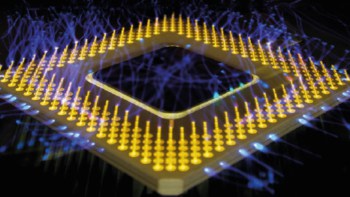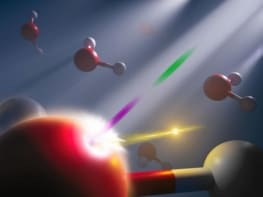The spin Hall effect has been seen in an experiment for the first time. The effect, which was predicted by theorists over 30 years ago, causes "spin-up" and "spin-down" electrons to build up on opposite sides of a sample in the presence of an electric field. The ability to manoeuvre electron spins with an electric field rather than a magnetic field could prove useful for making "spintronic" devices that manipulate spin rather than charge (Y K Kato et al. 2004 Sciencexpress 1105514).

The classic Hall effect occurs when an electric current flows through a conductor in a magnetic field. If the current and magnetic field are at right angles, the Lorentz force deflects the electrons and charge builds up on one side of the conductor. This in turns produces a Hall voltage across the sample that is perpendicular to both the current and the magnetic field.
To detect the spin Hall effect David Awschalom and colleagues at the University of California at Santa Barbara used a scanning optical microscope to look for signs of spin accumulation in the characteristics of light reflected from semiconductor samples. If the sample is illuminated with a linearly polarized laser beam, any region where spins have gathered will rotate the polarization in a process known as “Kerr rotation”. The electric fields in the experiment were typically about 10 millivolts per micron.
The Santa Barbara physicists began by focusing the laser beam – to a spot size of about two microns – on two wafers of gallium arsenide and indium gallium arsenide. Then they scanned the spot across the wafers and measured the Kerr rotation at each position. The results showed that oppositely polarized spins did indeed accumulate at the edges of the sample when an electric field was applied.
“The existence of the spin Hall effect shows it is possible to direct spins depending on their orientation within conventional semiconductor circuits in the absence of a magnetic field,” Awschalom told PhysicsWeb. “Although the effect we observed is small, it offers a new pathway to shuttle spin information in semiconductors and may be useful in developing practical spintronics devices.”



